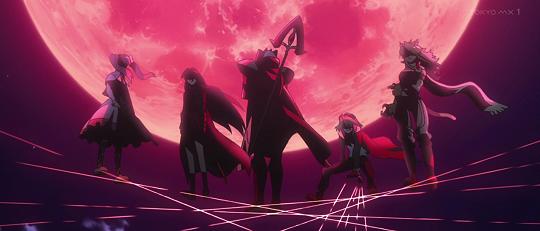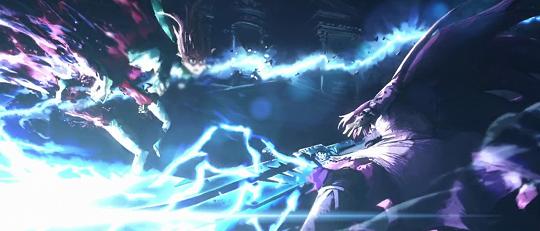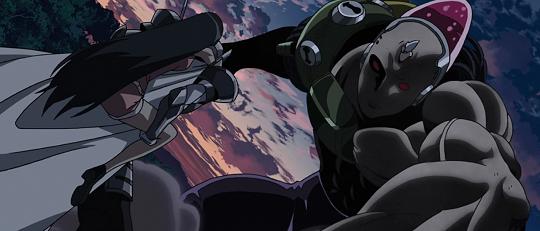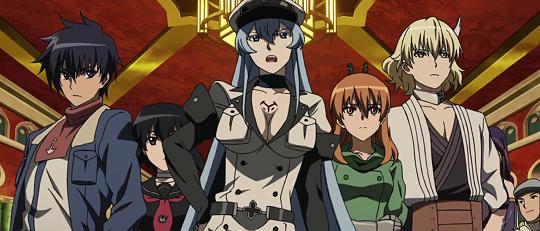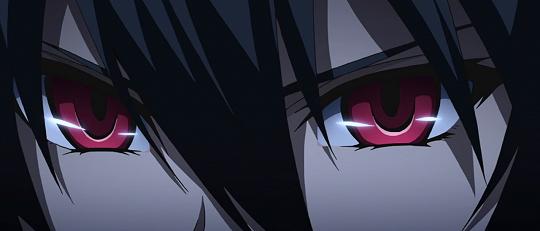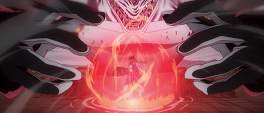There’s a point at the end of a series, the final episode receding into memory, when you wonder why you kept watching it. Akame ga Kill is exactly that series. It is staunchly, even startlingly mediocre in just about every regard, but because it hovers just above that baseline of entertainment - not offensively dumb enough to abandon but not good enough to sing its praises - here I find myself twenty four episodes later.
There wasn’t the remotest of hints that it was ever going to be better than average. From the off the story of Tatsumi, a swordsman from the boonies whose compatriots are killed and he falls in with the band of assassins, Night Raid, is about as nuts and bolts as it comes. Chief amongst the group though is Leone with a ferocious blonde mane and a fiery attitude. No wait, maybe it’s Sheele the demure, bespectacled scissors wielder. Or perhaps Bulat…
Yes, despite being right there in the title, Akame manages to be the least interesting of the entire cast. That doesn’t mean the other members are paragons of characterisation, only that Akame’s robotic demeanour and skirt plus sword equals character design means she’s at the bottom of a list that grows ever longer as the series progresses. It has to though when the story offs any character it feels the audience may be growing attached to. As a concept that’s fine and if done with enough chutzpah and conviction (see X: The Movie, Berserk et. al.) it can work supremely well; the problem Akame ga Kill has however is that all of the deaths are, flatly, pointless.
Not meaningless mind you. Meaningless deaths in, for instance, war movies paradoxically gain meaning by demonstrating the brutality or unforgiving nature of the setting. Here, the deaths are just used to balance the numbers and as a futile attempt to scratch out an identity in a genre overflowing with lukewarm action set in an unspectacular medieval-fantasy world. If the series were a rowdy child then, this would be its attention seeking behaviour. All boisterous pot-banging just for someone, anyone, to notice them.
It’s made worse by the dwindling number of surviving characters who, after only a brief moment of histrionics to demonstrate, yes they have feelings, it’s business as usual. If those who knew the deceased don’t care about them, why should we? Oh of course we’re fed the standard party line of working towards a cause, omelette and eggs and so forth, but the reality is that it would be too much hard work to introduce any emotion other than placid indifference. There is certainly an attempt, heading straight for the Gurren Lagann-esque manly spirit but it only manages some short lived homoeroticism between Tatsumi and serial shirt remover Bulat.
If the deaths of the main characters are met with disinterest then the wholesale slaughter of the opposing side is downright laughable. Bad guys are brought on from stage left, all snarling scenery-chewing villains, only to be unceremoniously booted off in an episode or two. This becomes especially preposterous when omega evil doer Esdeath, a pom-pom wearing S&M fetishist, summons her “best men” only for them to be killed in short order. “I’ll just summon my better men then!” And so on. Father and son, tutor and pupil, it matters little when their deaths mean less to their friends and comrades than getting a splinter.
Yet the series goes to extraordinary lengths to paint the bad guys as people. You know, just like you and me, they just took the wrong path is all. The mask wearing pyromaniac is a loving father and husband, and he only burned all those children to save other villages… From being burned… That makes sense if you’re- no, actually that makes no sense at all. And the juxtaposition between freak and family man is so overplayed that every episode with him in just made me want to watch Meet the Pyro on repeat.
It’s certainly leagues funnier than any of the levity that is shoehorned into Akame ga Kill’s quieter moments, be that the OCD Susanoo or the early series’ favourite of mealtime banter. From these, what noteworthy elements there are do eventually push their way to surface against all odds, yet they feel accidental more than purposeful. So the tepid romance of Tatsumi and Mine is initially welcome because it’s not the obvious Tatsumi x Akame pairing, but it grows into something more, rife with teenage naivete and something approaching genuine love. Likewise the final face off between Akame and little sister Kurome manages to be poignant (for this series), probably due in a large part to the prequel manga Akame ga Kill Zero.
These are sporadic highlights though and don’t make up for the crayon-up-nose writing that makes up the rest of the series. Character deaths, regardless of how brutal are treated as speed bumps and never shake a character’s conviction or jeopardise the abstractly planned revolution. Missed opportunities pile up in the series’ wake, as chance after chance to explore what it ostensibly wants to be about - revolution against systematised corruption, conviction against insurmountable foes, love in a time of death - are wasted.
But I still watched it. Even when it passed the twelve episode mark and I was genuinely surprised it was going to run for a full uninterrupted two seasons. In a way then the series is watchable precisely because of just how unsubtle it is. It may make ineffectual pawing motions towards loftier themes but the director, or at least the screenwriter, knew their limits and went for action and absurdity over tact and symbolism. Which means when the series grabs your head, and like a naughty puppy, makes you look at the horrible thing it’s just done - crucifixions, zombies, decapitations etc. - it’s not going to be for long. There are girls with howitzers for arms or giant robots or freakishly eared ne’er-do-wells coming up, rendered with neon brightness and eyecatch posturing. It’s never as obstinately unfriendly as something like Brynhildr and, despite trying, not as full-tilt ludicrous as Black Lagoon, settling then for an inoffensive middle-ground.
That’s obviously no kind of recommendation: it’s not awful, you could do worse; but if there were an award for The Most Mediocre then Akame ga Kill would win. Its lack of pretension means that it’s watchable week to week but destined to be maligned and forgotten in the rush for the next season. If you had seen every other anime series and this was the last one you had to watch, you will probably get more entertainment from it than staring at a wall. Probably.




